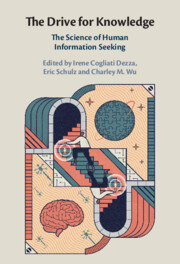Book contents
- The Drive for Knowledge
- The Drive for Knowledge
- Copyright page
- Contents
- Figures
- Tables
- Notes on Contributors
- Preface
- Part I What Drives Humans to Seek Information?
- Chapter 1 The Motivational Processes of Sense-Making
- Chapter 2 From Curiosity to Interest
- Chapter 3 Curiosity-Driven Exploration
- Chapter 4 Searching for Information, from Infancy to Adolescence
- Part II How Do Humans Search for Information?
- Part III Which Machinery Supports the Drive for Knowledge?
- Index
- References
Chapter 2 - From Curiosity to Interest
Accumulated Knowledge Supports Long-Term Persistence of Information-Seeking Behavior
from Part I - What Drives Humans to Seek Information?
Published online by Cambridge University Press: 19 May 2022
- The Drive for Knowledge
- The Drive for Knowledge
- Copyright page
- Contents
- Figures
- Tables
- Notes on Contributors
- Preface
- Part I What Drives Humans to Seek Information?
- Chapter 1 The Motivational Processes of Sense-Making
- Chapter 2 From Curiosity to Interest
- Chapter 3 Curiosity-Driven Exploration
- Chapter 4 Searching for Information, from Infancy to Adolescence
- Part II How Do Humans Search for Information?
- Part III Which Machinery Supports the Drive for Knowledge?
- Index
- References
Summary
Information-seeking research emerges from separate traditions focusing on one-time information-seeking behavior (research on curiosity), and long-term task engagement (research on interest). However, these lines of research have been developed independently, and there has been little discussion as to how they can be understood in an integrative manner. Here we present a general framework (the reward-learning framework of knowledge acquisition) that provides a more comprehensive understanding of information-seeking behavior, effectively linking these two research traditions. This framework is based on existing reward-learning models that account for one-time information-seeking behavior, but extends them to explain its long-term development by incorporating the key role of knowledge accumulation.
- Type
- Chapter
- Information
- The Drive for KnowledgeThe Science of Human Information Seeking, pp. 31 - 52Publisher: Cambridge University PressPrint publication year: 2022



